HEAT OF THE MOMENT
BY TREVOR BACQUE • ILLUSTRATIONS BY MATT SHIPLEY
It came without warning. Prairie farmers were dealt the environmental version of poker’s 7-2 off-suit: drought conditions not seen in 20-plus years and a heat dome, which may become agriculture’s word of the year for all the wrong reasons.
With few exceptions, the growing year was generally poor across Alberta. Most had no choice but to face the punishing conditions head on. While many farms did not even produce half what they did in 2020, there were bright spots and farmers try to remain stalwart with optimism in 2022.
Part I: Agronomic implications
How drought may impact field practices in the coming season
As 2020 wound down, growing conditions seemed reasonable across the province said Ross McKenzie, a semi-retired agronomist in Lethbridge. For more than 45 years he’s played in Alberta dirt and tracked agronomic conditions.
“Some areas were a little drier than normal but I wouldn’t call them drought years, maybe just a bit drier than normal,” he said. “Even last fall, we had ‘near’ and ‘normal’ precipitation going into winter.”
However, as 2021 unfolded, McKenzie documented 10 straight months of below average precipitation between Jan. 1 and Oct. 31 in the Lethbridge area. It was a similar story in many areas of the province.
This shortfall was keenly felt by all farmers between the critical dates of May 1 and July 31. The entire province averaged 63 per cent of normal rainfall during that timeframe. The hardest hit areas were Lethbridge (33 per cent of normal), Blackie (47 per cent) and Oyen (54 per cent) while the top three rainfall regions were Manning (96 per cent), Lacombe (84 per cent) and Vermilion (71 per cent). Temperatures soared all the while and the highest temperature in the province was recorded at Grande Prairie (41.5 C) on June 29. During the heat dome of June 27 to July 3, 49 Alberta temperature records were set and next door, Yellowgrass, SK, lost its Canadian designation as the hottest spot in the country’s history. The government of Alberta declared the province experienced a less-than-once-in-50-year low for precipitation in its July 13, 2021, update.
AFSC reported crop yield was 37 per cent of the five-year average. Despite this, the quality of all crops was better than average with the exception of malting barley and oats. Across Alberta, the northwest reported the highest yields, 20 per cent below the five-year average, while the south had the worst yields, approximately 56 per cent below the five-year average.
The Palliser Triangle was the hardest hit area of the Prairies, McKenzie noted, and said even irrigated farmers had to work overtime. Just due to the heat alone, yields take a 10 to 15 per cent hit. “Most farmers did the best they could; it was unprecedented,” he said. “Historically, the brown and dark brown zones are typically a little warmer and drier than the rest of the Prairies. We really almost have to accept the occasional drought year.”
McKenzie said Alberta, but especially its southern area, fared well between 2002 and 2015, which were years primarily characterized by adequate moisture, if anything. However, 2021 was all about the heat. The heat dome collided with head emergence and the results were disastrous, said Sheri Strydhorst, agronomy research specialist with Alberta Barley and the Alberta Wheat Commission (AWC). She also farms at Neerlandia with her husband Shane.
“Thirty-plus extreme heat around Canada Day was the end for productivity,” she said. “It kind of secured those really low yields.”
Given the extreme weather farmers faced, Strydhorst said they must test their soil. “2021 could be a blessing given how fertilizer prices are for the 2022 crop year,” she said. “We’re really encouraging farmers to soil test to see what they’ve got. That’s really important to save them money and understand what they have going into 2022 so they don’t over-fertilize.”
If a soil test shows a higher-than-expected fertility rate due to non-existent nitrogen mineralization, farmers can consider in-crop applications to spread out risk, suggested Stryhorst. “People might be surprised with what they find.”
Farmers considering an abrupt change in rotation must be watchful for herbicide carryover. Owing to dryness, the soil likely holds an above average amount of herbicide that has not broken down. “That limits pulse, canola and durum wheat options,” she said. “We really want people to think about rotations.”
Products have various breakdown periods and if an area received less than 150 millimetres of rainfall between June and September, Strydhorst said there is definite carryover risk, specifically for Group 2 and 3 products.
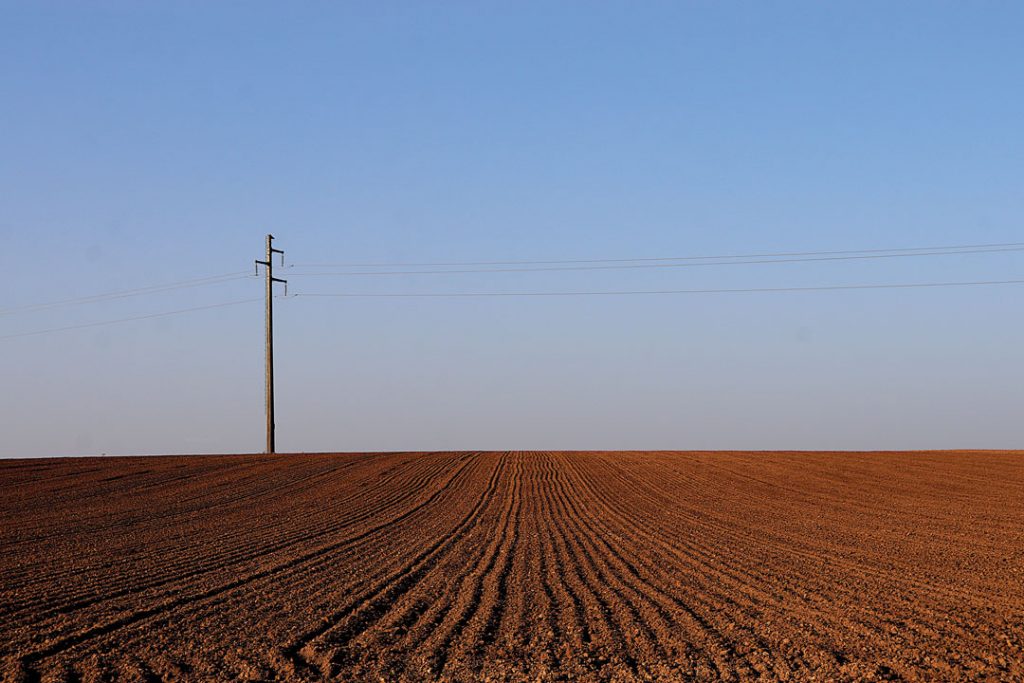
FARMER PERSPECTIVES
Spring seeding was “beautiful” for Kirriemuir area farmers Craig and Jinel Ference, who planted barley, canola and corn while raising 8,000 feeder cows. Their soil moisture profile was lower than normal and dugouts didn’t fill up by springtime. Nonetheless, there were no warning signs early on.
“We were as efficient as you possibly could be,” said Craig. “We seeded deeper to try to hit that moisture and had good germination. We had a normal year up until July 1.”
Like many farmers, the Ferences endured about five straight weeks of scorching daytime highs starting in late June. “That hit and then we were just going backwards,” he said. “We started getting rain at the end of August and all that did was affect payouts on rainfall insurance.”
He is thankful their corn performed the best, with yields that ranged from just grazable to eight tonnes per acre. Both their barley and canola crops did not hit the break-even point. The farm’s silage pit contains somewhere between a two- and three-year feed supply for the cows, but Craig expects to use anywhere between one and two years’ worth just to get his animals through winter and spring.
“I can only do it one more time,” he said of dipping into the pit. He said it’s not even possible to bring in the 350 tonnes per day required to feed the animals. The farm will be able to absorb this year’s brutal conditions but not again in 2022.
“We are going to start to have long-term damage to pastures and native grass if this goes another year,” he said, and added a harsh winter will finish off many cow-calf producers.
Ference said in 2022 they will up their corn from 75 to 90 per cent of total acres to help replenish their feed supply.
For Warner area cattleman and farmer Jacob Bueckert, his 2021 was equally tough, especially in the fall. With sky-high barley prices, Bueckert began to import DDGs and corn from the U.S., but even that backfired. The Sweetgrass rail stop that runs closest to his yard broke down in mid-October. What was supposed to be a three-day interruption lasted more than 20 days. Bueckert had 2,500 tonnes of DDGs sitting in those cars and was forced to buy locally to keep his animals fed with about 150 tonnes per day.
He found it necessary to import corn given high domestic feed prices. “I bought cattle six months ago that are arriving now and I thought we’d use $300 per tonne barley,” he said in late October. “Now it’s $400. We can’t continue to run cattle at these prices.”
Bueckert’s corn pencilled out to a savings of about $120/head. He was pleased with this as his yields on dryland silage were two tonnes per acre, whereas in a normal year, it fluctuates between six and 10. “Between COVID and the drought, it’s really thrown a whole other set of challenges at us,” he said. “We need four times the feed.”
His winter wheat received much-needed moisture in early November, which leads him to believe it will at least sprout and grow. Despite this, Bueckert said he is nowhere close to comfortable with the situation.
Depending what spring and summer bring, this year could be mild compared to next year,” he said. “We’re a long way from having a good year next year, but you have to start somewhere.”
WHAT ABOUT BUGS?
The pest report of 2021 is a mixed bag that differs by crop. Tyler Wist, a federal government entomologist based in Saskatoon, SK, said the drought brought a mixed outlook for pest pressures this year.
While early 2021 seemed to lay the groundwork for wheat midge to thrive as the pest favours wetter, cooler weather, nature had other plans. The hot and dry conditions proved to be an unlikely ally, wiping out the majority of populations. Similarly, the brutal weather halted pea and cereal aphid populations.
“When the weather hit 36 C to 37 C, it exceeded the upper thermal tolerance limit for aphid species,” said Wist. “The population never really took off like it typically does under more temperate conditions. Insects develop on degree days, but they seemed to be held back because of the hot weather.” Typically, between 26 C and 30 C is the upper limit for most aphids.
Because crops senesced so early, he added, the aphid lifecycle was out of sync with crop maturation, which gave the insects little chance to cause damage. In certain regions, striped flea beetles were also scarce. This included Wist’s home turf of Saskatoon. He needed to collect the overwintering generation of striped flea beetles for a research project in late August and early September and simply “couldn’t find them at our research farms.”
As well, pea leaf weevil, a vicious pest of the rhizomes of pulse plants with no true control option, may also have been impacted due to weather. “We’ve had drought conditions on and off for several years, and pea leaf weevil populations have retracted,” he said, and added that provincial survey data indicates they have shrunk right back across Western Canada.
One pest that didn’t mind the heat was the wheat stem sawfly. Unfortunately, its natural parasitoid enemy, Bracon cephi, is knocked back by such conditions. Sawfly populations were up and if 2022 is similar to last year, this could become a more pronounced issue.
Grasshoppers also thrive in hot, dry weather, while fungal pathogens that keep grasshopper populations down thrive under wetter conditions. Although there has not been a declared outbreak since 2002, if current conditions continue, 2022 might be the next one, said Wist. Warm, moderate fall conditions, Wist believes, also helped grasshoppers make it to the egg laying stage, which takes place once grasshoppers reach adulthood.
“Look at the weather,” he said plainly. “If it’s not going to be raining at all keep an eye on those hoppers. They move from field margins into the field. When they’re small, you have opportunities to spot spray or spray the edges of your crop where they are congregating. Do some scouting and you can knock them back with not much effort if you catch them early.”
Despite the overall difficulty of 2021, McKenzie preaches perspective. He encourages farmers not to obsess over a single dry year. “All a farmer can do is say, ‘OK, we had a dry year, my soil conditions were dry heading into winter.’ Decide accordingly into next spring with fertility rates and add or cut back. A farmer just looks at their risk and how they want to approach things. It’s really all a farmer can do: look at past experience, present conditions, talk to specialists and plan for next year accordingly.”
Part II: Economic impacts
Insult to injury with contracts, inputs and insurance
Brutal as conditions were in 2021, many are keen to forget the year and move on. For those who want to know just how bad it truly was, even if merely out of morbid curiosity, insurance payouts are a chilling indicator. “I’d say we’ll pay out more money than we ever have,” said Jesse Cole, supervisor of innovation at AFSC. “It could be more than multiple years combined.”
The latest five-year payout average from 2016 to 2020, not including hail endorsement, is $320 million. By comparison, 2002 was $650 million. “It’s one of those disasters [where] there are some OK pockets, but it’s very widespread,” he said. The final crop numbers, based on AFSC Harvested Production reports, were not known at press time.
Not surprisingly, Cole uses the difficult year to plug crop insurance. In a year as bad as this, one key feature of crop insurance is the Variable Price Benefit (VPB). As crop prices hit record highs, crop insurance will play a key part in certain farmers not losing their shirts, despite losing their crops. The VPB allows AFSC to pay out claims at a higher level if the market moves up. Even though it caps at 50 per cent, that’s a possible farm-saver for many.
“With 70 to 80 per cent coverage, even with large losses, [farmers] may end up with a better-than-average revenue year,” he noted. “That’s very interesting. It speaks to the relevance of [crop insurance]. Anyone with a crop and crop insurance is doing OK.”
Cole said this year, insured crop acres jumped 1.2 million to 15.6 million from 14.3 million. That is about 80 per cent of all acres in Alberta. He suspects the increase in acres was due to the fact AFSC offered a 20 per cent discount on insurance in 2021.
The year was hard on crop farmers, but also extremely challenging for the livestock sector. The Alberta government made $136 million available through AgriRecovery on Oct. 29, and asked the federal government to contribute an additional $204 million. If the federal government grants that money, cattle and bison farmers could earn $200 per head in relief. The federal government already pledged $100 million to be shared from B.C. to Ontario. Alberta’s Environment and Parks ministry also announced a temporary program to extend grazing rights and licences to vacant Crown lands and forested areas for an extended period of time.
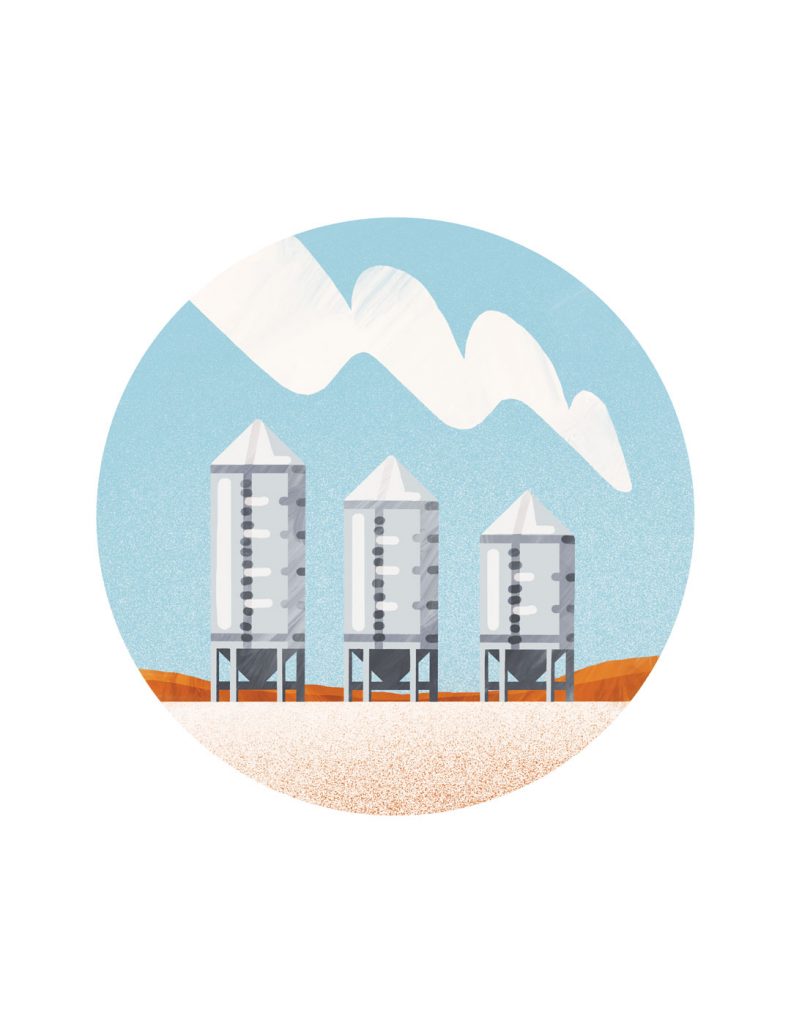
Lack of yield is hard on both livestock and crop farmers, but farmers may feel an additional sting as grain companies are reportedly charging extra fees on top of regular cancellation fees. These are often referred to as “admin,” “replacement” or “cancellation” fees. With no standardized grain contract in place across Canada, every set of paperwork can have unique terms and conditions.
Geoff Backman, business development and markets manager for Alberta Barley and AWC said farmers unfortunately have little recourse once they’ve signed a contract. Still, he’s heard enough tales of woe that he put together a farmer survey intended to capture these stories. “The impact of this on farmers is going to be much higher, and availability and awareness of this practice is going to be much more prevalent,” he said of the extra charges. “It’s a topic that has been raised by farmers in the past.”
Although farmers buying out contracts for failure to deliver is nothing new, a year like 2021 is one further twist of the knife. Certain farmers signed deals in early 2021 to deliver CWRS for November at $6. However, by delivery day the spot price had jumped to $13. The $7 hit is substantial but the penalty on top of the $13, which might be 10 cents, or maybe 20—it’s entirely discretionary—just compounds the issue as farmers are squeezed for more.
“It doesn’t surprise me and it’s unfortunately in line with what we’ve heard from farmers over the past five years,” said Backman. “It indicates the contractual terms have been increasingly shifting risks onto farmers. It takes a year like this to see how far that process has developed. It’s concerning because farmers have viewed contracts in the past as a form of risk mitigation. They’ve been able to rely on contracts as a tool to ensure timely movement and steady cashflow.”
With what some feel is a raw deal in a bad year, Backman said this may cause farmers to be more scrutinous when signing contracts. “Due to some of the penalties associated with the buyouts, they may be changing how they view contracts,” he said. “They may view contracts as risky in the future.”
Additional economic hits continue to play out in other ways for farmers. Commodity prices are fantastic, which is always welcome, but it’s on the back of certain inputs likewise being priced at all-time highs. Anhydrous ammonia was priced between $1,200 and $1,500 in November while various farmers told GrainsWest their local fertilizer dealers were pricing 46-0-0 fertilizer at more than $1,200 per tonne, double the price from a year ago. Similarly, glyphosate has been routinely quoted at $12/L or more, also double. Phosphorus crested above $1,300 and potash was more than $900. Add a tighter seed supply to the equation and 2022 is shaping up to be a pricy year. It also makes forward selling risky. Because supplies are tight, farmers are hesitant to make presales in the event they can’t even purchase seed.
According to Fertilizer Canada, various supply chain problems have helped drive certain issues with procurement. China reduced its exports of nitrogen fertilizer, Belarus, a huge potash producer, faces political sanctions after civic upheaval and unrest, while massive storms in the U.S. Gulf region have all been sizable disruptions over the last 12 months.
Chad Andrukow, general manager of agronomic consultancy Point Forward Solutions in Camrose said retailers are only buying fertilizer when a farmer confirms a sale. “It’s just because of the concern of the volatility,” he said. “Back in June-July, retailers were definitely speculating even then. The price of nitrogen has risen $600 a tonne. [With] that rise, there’s been a lot more hesitancy on retailers to go and buy fertilizer.”
Many farmers are now resigned to wait until February or March, hoping prices will have come down, but supply remains the biggest overall issue. “What I’m being told from retails, is even if prices drop, it’s going be a challenge to get that product farmers want to get their hands on if they want to buy,” he said. However, he added, there is still reason to think 2022 can be profitable for farmers. “Commodity prices are nearly double what they were last year so the return on investment is still there as long as they hold until next year’s harvest.”
Part III: The personal cost
Farm families cope with stress and anxiety
The mild winter, light snowpack, lots of wind and even a Prairie fire were all clues the 2021 growing season would be difficult. Still, Taber area farmer and AWC vice-chair Jason Saunders did what he always does: plan for the worst and hope for the best, especially in springtime, to ensure success. Though his land is located in the heart of southern Alberta’s irrigated landscape, his farm is about 10 kilometres from water, meaning it’s just not possible to turn on the taps. He farms dry like the bulk of Prairie farmers.
As spring approached, his moisture profile was average and there was even one last dump of snow in May to help things along. April and May conditions were not remarkable one way or the other. “By June, traditionally our wettest month, not much was happening,” said Saunders. “Two inches is the minimum [for June] and we did get some moisture. We can’t say we got zero. In June, four inches means it’s a good year, but two inches is kind of the minimum. It was six-tenths of an inch over the 30 days.” By the third day of the month, temperatures soared to 35 C and didn’t let up. “Six-tenths with that kind of heat is not good. I knew it was going to be hard by then.”
As crops began to set their yield during the heat wave, Saunders pondered his next moves. His canola, flax and chickpeas hung on for dear life while grasshoppers moved in, adding “salt to the wound.”
He virtually never sprays insecticide but this year he did so around the edge of one field. When he began harvest in the third week of July, it was more of a rescue mission. “I was surprised we got anything,” he admitted. He was finished by Aug. 30, a first for him. As awful as the season was, he remembers worse years and said it simply comes with farming in perennially dry geography.
“It’s depressing, it’s frustrating,” he said. “I grew up in the reality that you never count on anything until it’s in the bin. Period. It’s not to say I don’t do some presales, but we are always very modest with that. You try not to spend all your money in the good years, because you need it in the bad ones.”
Though farming is a weather-dependant endeavour, Saunders believes it cannot be a farmer’s sole fixation or it will eat you alive. “If you only focus on the weather and the things you can’t fix … it’s very challenging to have a happy, fulfilled career,” he said. “Just work with the things you can fix.”
Saunders said he has a strong support system that includes friends and neighbours, his wife and mother. “You get help, you talk to others,” he said. “It’s not just one thing, it’s a combination.”
It’s sound advice that reflects the message from Do More Ag, a non-profit agriculture group that supports the mental health of farmers across the country. One of its co-founders, Lesley Kelly, farms with her husband Matt at Watrous, SK. Their harvest concluded by Labour Day, and the crops they took off were nothing special. “It was extremely difficult and challenging on all fronts,” she said. “There was really no escape from those stressors.”

One way everyone at their farm coped was to note the positives of their day in a WhatsApp group chat. Just the simple act of writing a text for others to read became a small yet effective tool.
“They were even as simple as, ‘This winter we don’t have to work in -40 C and clean all those grain bags,’” she said with a laugh. “It gave a bit of optimism in those challenging and hard, difficult times … we rallied around those successes and clung onto them.”
Every day, the couple also shared their stress level on a scale of one to 10. Though the ratings often exceed the scale with a 15 or 20, this served as a release valve for some of that tension and let them laugh about it or simply share a smile.
Kelly encourages farmers to spend their winters doing whatever it is they love, especially if it will help them to not dwell on the very difficult growing season. For Matt, it’s being behind the bench coaching hockey at the arena, spending time with fellow parents and kids. For Kelly, quality time with other families in her community re-energizes her, as does attending farm shows and even the buzz of her iPhone.
“When I get a text or phone call from someone it means the world,” she said. “You know they are thinking of you, it brightens your day. It’s hard to describe but we need that connection and social aspect in our lives.”
She encourages farmers and farm spouses to watch for warning signs their significant other needs help. These include overreaction to minor quibbles, lack of sleep, impatience, irritability, avoidance of people, failure to return calls and loss of appetite. Missing simple, daily operating tasks and a significant increase or decrease in social media posting, may also signal a problem. All are potential indicators someone may be suffering in silence.
“When we see those in others, that’s when we can have these conversations,” said Kelly. “They can be hard and uncomfortable and awkward, but I’d take those—having that conversation and those challenges—than not having them, any day.
“Ask: How can I support you? what do you need? how can I help? Just statements of reassurance that you care, that you love them, can really help someone to open up.”
With a massive outpouring of support from within Canadian agriculture, the mental health conversation has shifted dramatically over the last five years and Do More Ag is leading the charge. Kelly is optimistic about this positive turn, especially when she thinks back to where the industry once was.
“There’s lots of work to do, and lots of barriers … but we are well on our way,” said Kelly. “Rarely would you see mental health as a session or discussion [at a farm show], now it’s on the agenda and it’s at board meetings. It’s pretty awesome.”
In Taber, Saunders will spend his winter with “paperwork, planning and fixing.” His game plan for 2022 spring planting will take into account the year may go one of two ways. Whichever that is, he’s ready.
“This was not our first drought and it wasn’t the worst for our area,” he said. “Weather is unpredictable and it doesn’t always make it easy. I try my best not to dwell on those things I can’t control.”
If you or someone you know needs help, visit domore.ag and review the organization’s resources and supports for farmers.




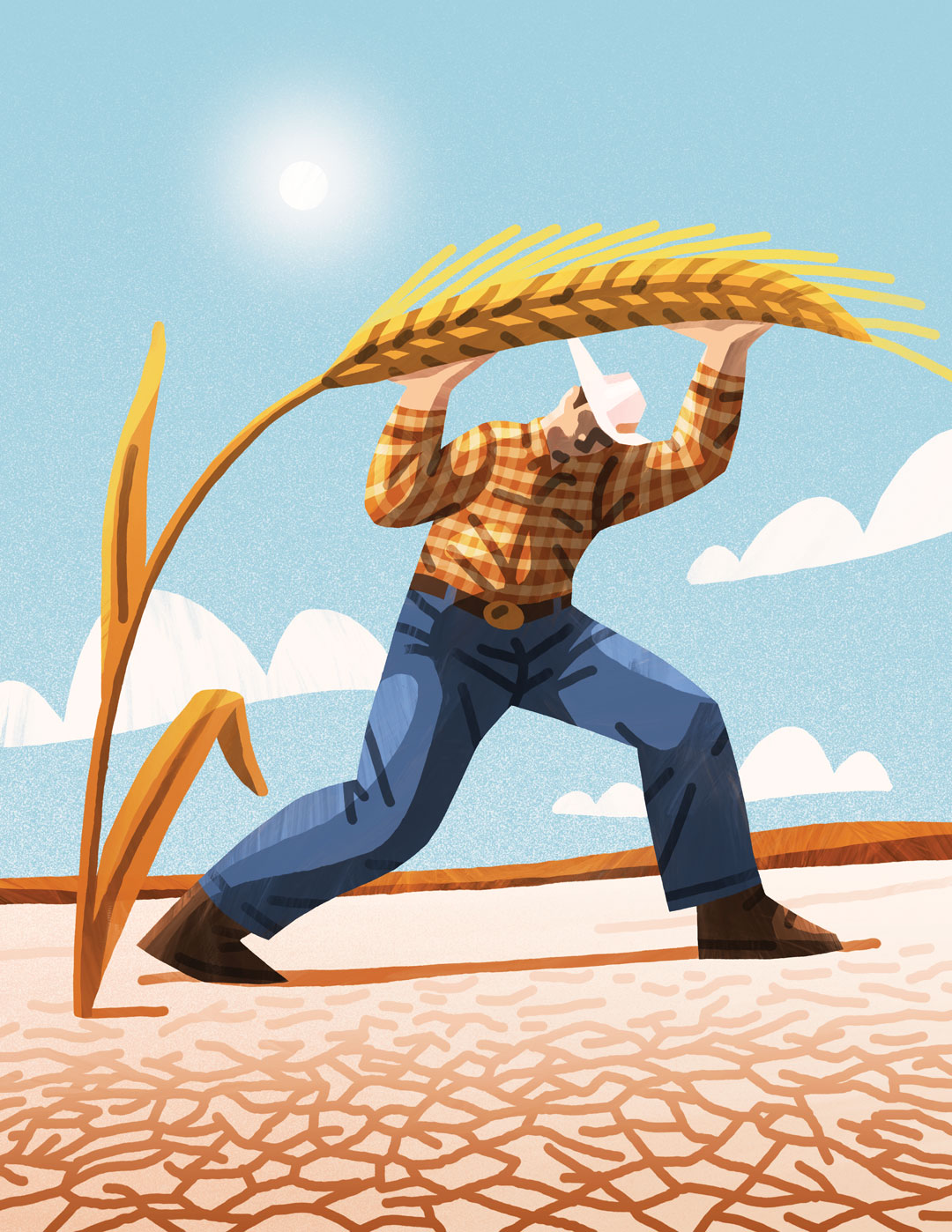
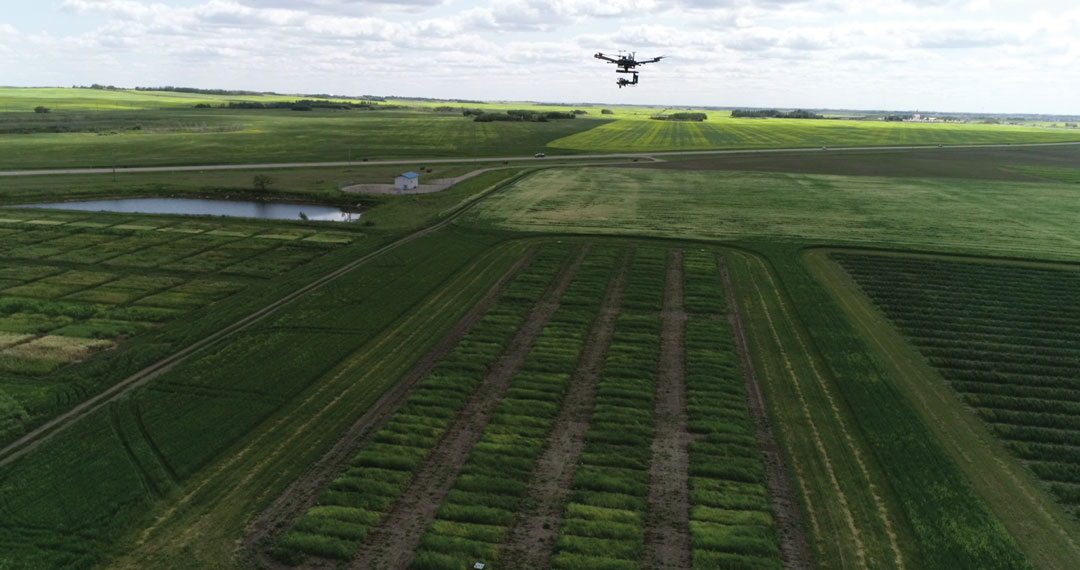
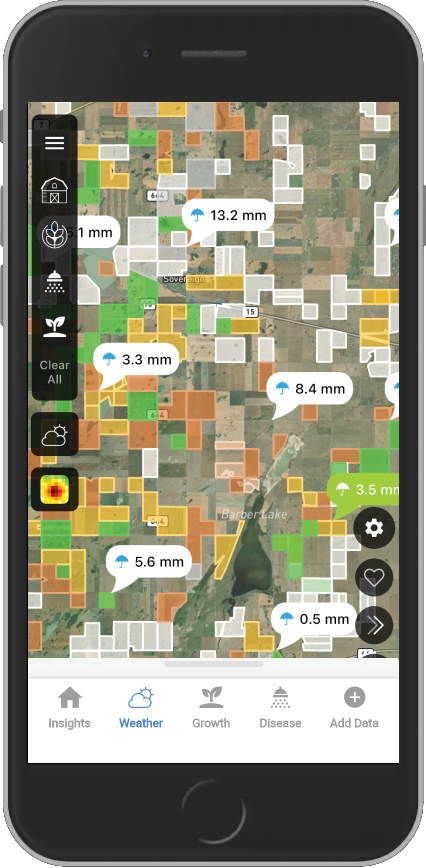
Comments